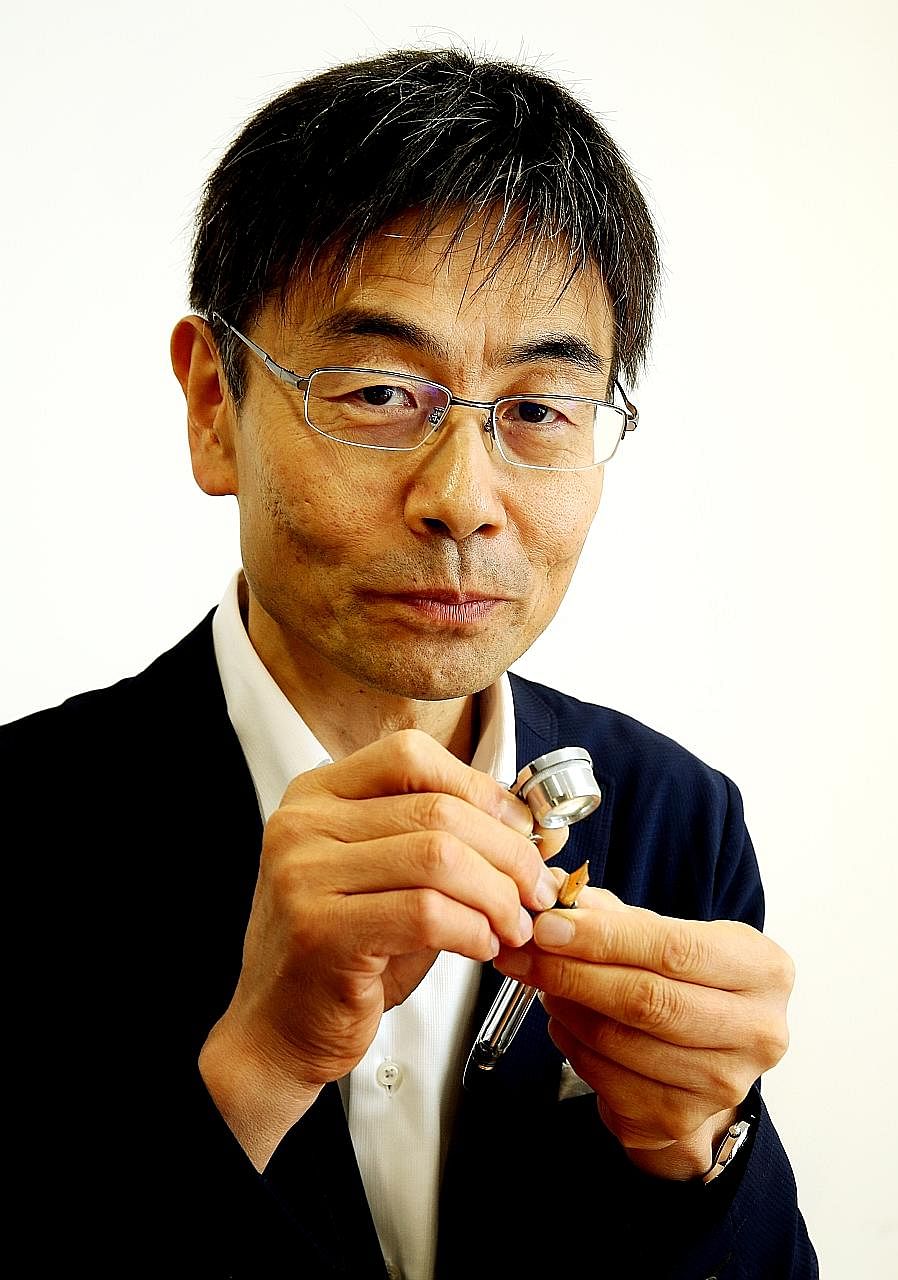8Q
Mr Atsushi Takizawa, 59, is a pen doctor.
That is, he fixes expensive fountain pens called Namiki, which start from $650 a pop. He cleans the pens and adjusts their nibs to regulate the ink flow.
Working as a pen specialist with Japan-based stationery giant Pilot, he has been travelling around the world since 2005 to service the brand's Namiki pens.
He was in town in July to conduct a pen clinic organised by Pilot's Singapore office. During the session, he gave tips on how to maintain and care for fountain pens, and about 50 people had their pens repaired by him.
A spokesman from Pilot Pen Singapore says the most expensive fountain pen sold in Singapore was "the limited-edition Namiki Sakura", which was sold for $24,000 in 2003.

Mr Takizawa joined the pen industry by accident more than 30 years ago, when he was a 24-year-old fresh graduate.
He says: "After graduating from university, my senior, from when we were studying machinery technology, invited me to join the company."
Since then, he has risen through the company ranks to become a pen specialist.
Pilot Pen Singapore says the local pen-collecting scene sees a wide variety of people from various backgrounds. They range from "students who were introduced to fountain pens in school, which made them fall in love with calligraphy and lettering, to pen collectors who collect Namiki fountain pens for their intricate art and workmanship".
There is a Singapore Fountain Pen Lovers Facebook group with more than 3,600 members, some of whom meet once a month.
Asked why Singaporeans like to collect expensive pens and use them, Mr Takizawa replies after much consideration: "For status."
1 What was the first fountain pen you owned?
The first fountain pen I had was from when I went to high school, and my parents bought it for me. It was not from Pilot.
2 What is the most expensive pen you own and how did you get it?
It's not a matter of how expensive, but how valuable it is. I bought it when I joined the company - the Capless pen. It was 5,000 yen then, so it's not that expensive. It was because of this pen that I became interested in the structure of the fountain pen.
3 Which is the most expensive pen you have fixed?
The Namiki pen. I came to Singapore in 2014 for the first time. I service a lot of Namiki pens and they can cost $20,000 and above. A customer brought six pens for me to service. I had to adjust them to be in the same condition. It was difficult because all the nibs were different. I just tried my best to adjust them to be as similar to one another as possible.
4 Why do you think people still buy fountain pens?
When you use a ballpoint, the writing is even. When you use a fountain pen, which way you tilt the pen results in a different handwriting. For the Namiki pen, Singaporeans tend to use it, while in Japan, they tend to collect it. The Japanese prefer using something simpler.
5 How many pens have you collected over the years?
I'm not a collector. If I have pens, I would have the urge to use them. So I can't have so many because if I have too many, I can't use them all the time.
I have three pens. The Capless is too valuable to use. The second one is a Custom 742 with a gold nib. The third is a Lucine with a standard steel nib. I prefer to use the Lucine as the nib is harder.
6 Which three qualities should a pen specialist have?
One, you have to like what you do. It's a repairing job, completely different from producing. You don't create the pen, you dismantle it. This might be mundane for some, so you have to like it.
Two, you have to have respect for the product. When a customer brings in a pen to be fixed, it is not from the production line, it is the only one in the world, so you have to treat it with care and responsibility.
If you satisfy those two requirements, skill will come later, with experience.
7 What do you think is a common mistake made by fountain pen collectors and users?
They modify it to make it easier for them to use, but their actions often damage the nib.
Another mistake is using the wrong type of ink. There are two types of ink, dye ink and pigment ink. Pigment ink is not recommended as the ink particles are larger and get clogged in the nib easily. Once the ink solidifies, it is hard to remove.
8 How would you like to be remembered?
As a dedicated pen doctor who does a good job without any compromises and who brought joy to his customers with his nib adjustment skills.
